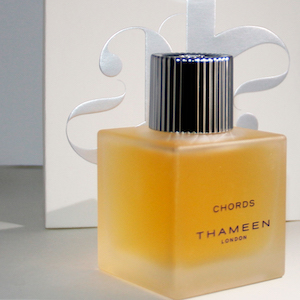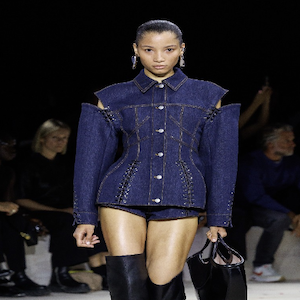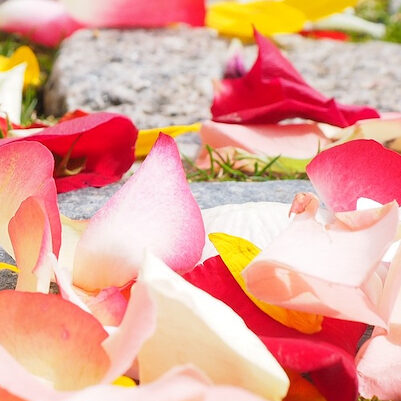Warsaw, a city in Bloom
By Jo Phillips
Most European countries that survived WW2 had to wait 15 to 20 years before the austerity began to subside. However, for those countries and cities blighted firstly by the war and then by the communist take over, only now, 20 years on from the end of this troubled historical period do we see a re-birthing in many of these previously haunted places. Once such of these is Warsaw, a city flatten not by the allies during the war but by the German occupiers and if flattening the city was not bad enough, once the Russians invaded there really was not much left to call historical Warsaw.
However, on a recent trip it is clear to see this is a city beginning to not just find it’s feet but flourishing anew with its identity. Forming fast not just out of its past history but forging a brand new identity very much driven by the generation probably who are not really even old enough to remember its communist past. These vibrate people are carving a new city on very much their own terms and vision, from the ground up.
Spending three days in the city was just enough to scratch the surface on what feels like a vibrant dynamic area awash with new ideas and brave fresh thinking.
Dotted around the city is new brave architecture and great example of this is the Polin Museum which opened its doors to the public in April 2013. It is a Museum celebrating the History of the Polish Jewish community and very much about looking at the whole history rather than just the relatively recent past horrors, rather presenting the thousand-year history of the Polish Jewish community.
It currently functions as a cultural and educational centre with programming, temporary exhibitions, films, debates, workshops, performances, concerts, lectures and much more. There are two significant elements that strike when coming up against this splendid piece of modern architecture.
Firstly the museum is surrounded by a lush green park, with the reasoning that people will come to the site not just for the cultural events and programming, but also for friends and families to sit and enjoy the area. Alongside the museum is a plaque created just after WW2 as a reminder of that the Jewish community suffered during the war torn years. The placement of this ultra modern museum next to a memorial of such significance that steams from the late 1940’s says so much about how the Polish are keen to create a new vision but not at the cost of the past.
Photo Alfred Molon
The building was designed interestingly not by Polish architects but by the Finnish studio Lahdelma & Mahlamäki who won the commission via an international competition. Even whilst it was still being constructed it received the prestigious Chicago Athenaeum International Architecture Award.
Photo Magdalena Starowieyska
Another building that ticks the box of modernity in a city setting is the University library of Warsaw. Unlike the Polin museum which is surrounded by greenery this building hosts a rooftop park. The building was designed by architects Marek Budzyński and Zbigniew Badowski which opened in 1999. The building consists of two parts, the front crescent-shape edifice assigned for commercial purpose like shops, cafes, offices and the main 6-storey high building is for the Library. Both parts are connected by a passage-way covered with a glazed roof with reinforced concrete, glass and steel features of the Library’s architecture. The UW Library garden, designed by Irena Bajerska, opened 2002. It is one of the largest roof gardens in Europe and is open everyday to the public, University students and employees.
There are in act an abundance of art museums in Warsaw catering to the historical works to the most up to date of both Polish and international works of Art. Another that is worth a visit is The National Museum in Warsaw which was originally founded in 1862 as the Museum of Fine Arts and is currently one of the oldest art museums in the country. The museum showcases a collection of works from both Polish and universal artists, from ancient times to the present including paintings, sculptures, drawings, prints, photographs, coins, as well as utilitarian objects and design.
Alongside the Museums the café society is alive and well. Warsaw does boast good summers and the city is awash with young people engaging with the outdoors. The food available around the city is in many ways far more diverse than the population. From international street food, to Japanese and Modern European with many menus containing a few traditional dishes. The food reflects the city and its people who embrace a creative multi-cultural approach.
One of the big signifiers of the cultural temperature of a city is its fashion scene. Of course Warsaw is no exception, and although on the streets there is a level of street style, it’s when you ever so slightly look below the tarmac that you really find the roots to a wonderful potentials and hotbeds of change.
There are a selection of young and established designers working in Warsaw from traditional to glamorous from sportswear to conceptual. Meet them here
Ania Kuczyńska, would probably be best to include within a more conceptual sensibility. Her collections are a take on workwear at its most subtle, with fabrications derived from cottons and other utility based cloths. The shapes are soft and loose which is obviously influenced by both the Japanese and Chinese schools of design, but with which can only be described as a personal, softer and more intimate side to the items. Her collection of bags are again soft and fabricated yet seriously clever. As an established name in her own city she has collaborated with other creatives and produced stunning images the encapsulate her collections well. Oh and what a way she wraps up your purchases!
Dream Nation is a label driven by both print and street-wear, all with its roots in organic and fair trade not just its fabrics but printing techniques too. Like so many of the designers production of both fabrics and make is based in Poland (in fact many european designers are manufacturing in Poland). The collection is based in sports inspired womenswear with a small collection of kids wear. Think graphic and cartoon inspired pieces in an array of waffle cottons through to fabrications based in Bamboo. This is a very modern business, so without a full wholesale network to be able to utilise like fashion trade shows these new breeds if they don’t have shop fronts are driving sales via the internet making their approach to business not just green but fresh.
Not that all the fashion and high end businesses are new; there are still a handful of craft-related companies alive and well. For example Jan Keilman is the perfect example of a business running since 1883 and is still run by the original family. Here is the craft of shoe making (by hand) passed down from generation to generation. The business may well have a level of ready to wear shoes, the seat of the business its made to measure service, from the most classic of gentleman’s and ladies shoes all the way through to some surreal pieces. With an extensive array of leathers to hand, the potentials are endless.
The location serves not just as a shop but as a back of the shop production centre, where the team actually sit and sew. The front very much in the style of a victorian drawing room meets Saville Row, and the back a storeroom of wonders with all the lasts of each customer stored against the wall, all in all making or quite the treasure trove.
But most of all the city is about the new and new-minded. However much the outside world filters through its taken very much and presented with a proud Polish twist. Take the fashion show presented by Robert Kupisz.
Robert again typifies the spirit alive and well in Warsaw of bold entrepreneurial spirit. Starting out his working career as a dancer and having reached the top, this was not enough. He sold up moved to London and trained as a hairdresser moving back to Poland only to hit the heady heights yet again in a second career.
If two careers were not enough Robert then moved to his first love Fashion. His collections are a gothic sportswear cross certainly with a sub-conscious nod towards his dancing days as the fabrications are based in cottons and elastic’s which allow for fluid movement. Covering both mens and women’s pieces the catwalk show was ashamedly celebratory, with huge lions at the top of the stage, loud music and models parading down the catwalk in full party swing!
The next designer raring to go is actually a sister partnership called Kaaskas. A contemporary clothing and accessories brand established by the of a young designer Kasia Skórzyńska and her sister Julia, who runs the business side of things. The brand focuses on creating modern silhouettes with clean lines enriched by playful prints, fabric manipulations and unexpected details. Think slightly soft conceptual shapes, workwear and Japanese influences topped off with vibrant prints all designed in-house. Again, like others, the business is run from their studio that also doubles as a shop and design space with the majority of sales coming via online portals and Polish shops.
Gosia Baczynska unlike many of the designers already mentioned is not only the established star of Polish fashion serving the rich and famous but an established name showing her collections at Paris Fashion week. She is in the wonderful position of having a shop (all chrome, concrete and design) where she sells her delights of evening and day dresses to a few collections of accessories from London based designers like Nicholas Kirkwood shoes and Fleet Ilya
More in keeping with a Roland Mouret style of design but more on the glamorous end with use of very high end often glittery fabrics the shop is a den of women’s dresses (she does create separates but its the full on glamorous dresses that jump out). Like him she drapes on a stand and does not draw out her designs. She works with some of the finest fabric houses used by the international fashion industries biggest names but also applies her love of painting and decoration on top of these rare and delicate cloths.
Alongside Gosia is one other name that may well be familiar with those outside of Poland, especially those who shop or keep up to date with what goes on at London superstore Selfridges. UEG is a conceptual stripped back label and was on sale at the Selfridges durint the Agender Pop Up where clothes that were non gender specific were shown, with this being the first store to have a gender neutral offering. Its fair to say Michał Łojewsk the designer behind the label like Robert Kupsisz, has an unusual journey towards his fashion career. Starting out as a graphic designer (Poland has a wonderfully rich history of graphic poster deigns) is very obvious when seeing a collection that is stripped back sports inspired and genderless. The pieces are often covered in slogans and paragraphs of text that sometimes are hand painted on to garments.
However, this is not just graphic design for graphic design sake, as behind every collection is a core eco political or social message. From saving the worlds bee population, pornography and the issues with killing animals to wear, the label uses the clothes to advertise the facts making the wearer a walking message board. Unlike all the other labels mentioned so far UEG is in fact the only label that doesn’t actually sell in its native Poland but is very successful around the globe.
Those that want to study fashion could learn the craft at The Warsaw Fine Art Academy. The university has only recently opened a fashion arm to the school where it takes the art of fashion extremely seriously. This years graduation show on 11 of June in fact only let 3 students graduate and show their collections at a mammoth show, which included the graduation collections along side past projects with live dancing and even DJ set from Stefan Wesolowski, a top Techno composer. (Poland has a very good track record with specific music collaborations and techno/modern classical musicians).
The three collections show that as with all the designers there is little outside influence but the ideas and concepts shown grow from the ground up. Concepts set into the traditions of the Country and set against a power to move forward and break free with a fresh voice and vision. The standard of the work shown was extremely high and would put most international fashion colleges to shame, for one reason many things like fabrics are manipulated and woven by the students themselves. The level of detail involved is impressive, probably when you have far less access to the ingredients readily available to most of the fashion students in Paris Milan New York and of course London, you are left only with skill and imagination.
Fashion is a new and vibrant voice in this city. Unsurprising its a city that is youthful, not just in thought but in practice. The area is teaming with the young and brave, even utilising the city’s river for an impromptu city beach, resourceful could be Warsaw’s second name!
Getting around town is easy, the trams go everywhere and are fun and reliable to ride on. There is also a new underground that runs two lines north, south, east and west.
Finally where is good to stay? Probably the best would be the H15 Boutique Apartments Hotel in the centre of Warsaw. Set within a beautiful 19th-century building, there are contemporary suites all with Italian designer furnishings and the usual complement of electronics. The hotel is scattered with modern art set on the brightest white walls and has everything to offer any boutique hotel around the world would.
However if its classic style you are looking for there are the Raddiosn blu group, Hilton and Intercontinental to choose from all offering the well seasoned traveller all creature comforts .
With massive thanks to the following people who allowed a wonderful exploration of the city of Warsaw.
Anna Przyluska from Warsaw Tour Paulina, Zena PR and all at The Polish Cultural Institute in London
Kuba our guide, Beata Dudzic and Marcin Rozyc from Warsaw Calling Chrysalis Project.
To find out more information please click here.



























